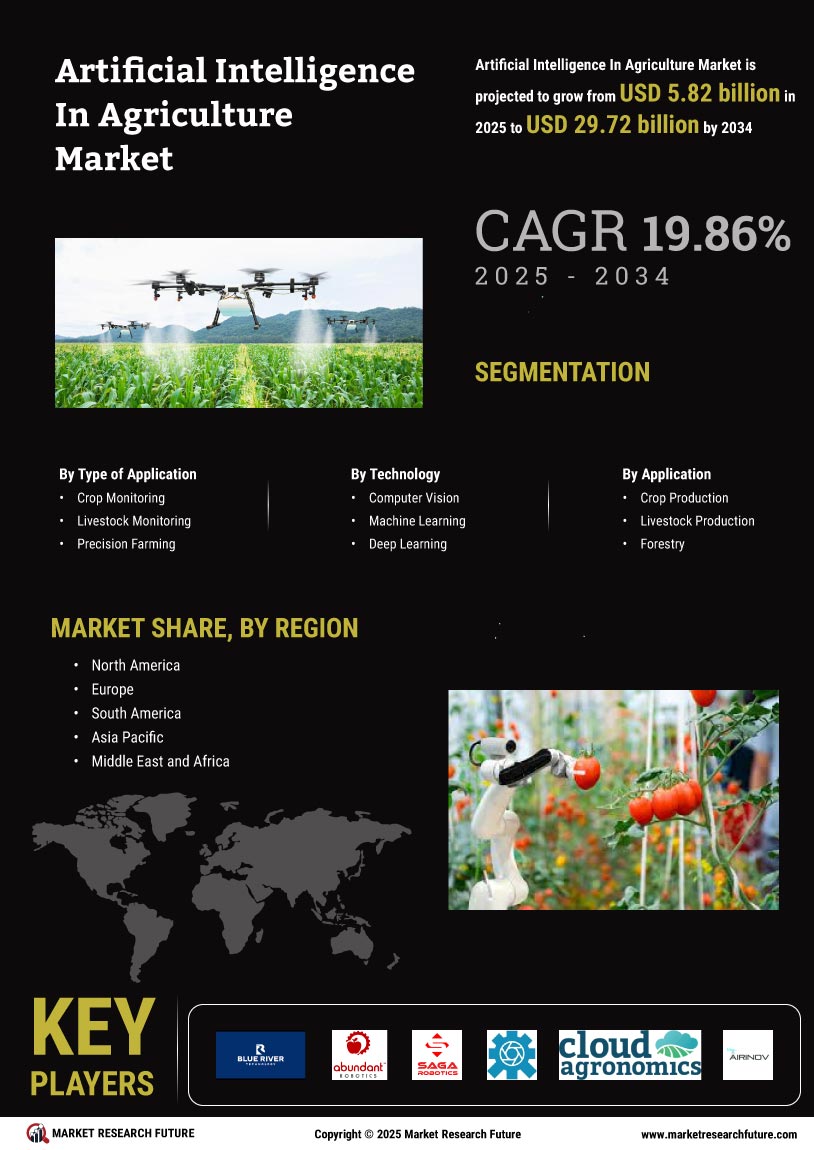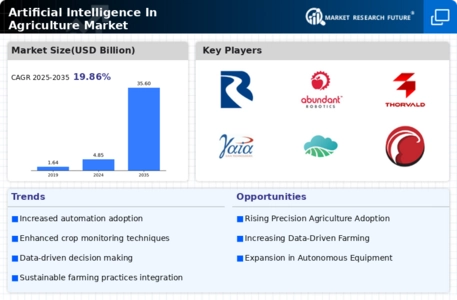Market Growth Projections
The Global Artificial Intelligence In Agriculture Market Industry is poised for substantial growth, with projections indicating a market value of 4.85 USD Billion in 2024 and an anticipated increase to 35.6 USD Billion by 2035. This growth trajectory suggests a compound annual growth rate of 19.87% from 2025 to 2035. Such figures reflect the increasing adoption of AI technologies across various agricultural sectors, driven by the need for efficiency, sustainability, and productivity. The market's expansion is likely to be fueled by ongoing technological advancements and the growing recognition of AI's potential to transform agricultural practices.
Advancements in AI Technology
Technological advancements in artificial intelligence are driving the Global Artificial Intelligence In Agriculture Market Industry forward. Innovations such as machine learning algorithms and computer vision are enabling farmers to analyze vast amounts of data quickly and accurately. For example, AI-driven drones can assess crop health and identify pest infestations, allowing for timely interventions. These advancements not only improve operational efficiency but also enhance decision-making processes in agriculture. As a result, the market is expected to grow significantly, with projections indicating a value of 35.6 USD Billion by 2035, underscoring the transformative potential of AI in agriculture.
Government Initiatives and Support
Government initiatives and support play a crucial role in the expansion of the Global Artificial Intelligence In Agriculture Market Industry. Many governments are recognizing the importance of AI in enhancing food security and agricultural productivity. For instance, various countries are investing in research and development programs aimed at integrating AI technologies into farming practices. These initiatives often include funding for startups and collaborations with agricultural institutions. Such support not only fosters innovation but also encourages farmers to adopt AI solutions, thereby driving market growth. The anticipated compound annual growth rate of 19.87% from 2025 to 2035 reflects this supportive environment.
Growing Global Population and Food Demand
The Global Artificial Intelligence In Agriculture Market Industry is significantly impacted by the growing global population and the corresponding increase in food demand. As the world population is projected to reach 9.7 billion by 2050, the pressure on agricultural systems to produce more food sustainably intensifies. AI technologies are being leveraged to enhance crop yields and optimize supply chains, ensuring that food production keeps pace with demand. For instance, AI can predict crop performance and market trends, allowing farmers to make informed decisions. This urgent need for increased food production is likely to drive the market's expansion in the coming years.
Increasing Labor Shortages in Agriculture
The Global Artificial Intelligence In Agriculture Market Industry is also influenced by increasing labor shortages in the agricultural sector. As the workforce ages and fewer young people enter farming, there is a pressing need for automation and efficiency. AI technologies, such as robotics and autonomous machinery, are emerging as viable solutions to address these labor challenges. For example, AI-powered harvesters can operate independently, reducing the reliance on manual labor. This shift not only mitigates labor shortages but also enhances productivity. Consequently, the market is poised for growth as farmers seek innovative solutions to maintain operational efficiency.
Rising Demand for Sustainable Farming Practices
The Global Artificial Intelligence In Agriculture Market Industry is experiencing a surge in demand for sustainable farming practices. As environmental concerns grow, farmers are increasingly adopting AI technologies to optimize resource use and reduce waste. For instance, precision agriculture tools powered by AI enable farmers to monitor soil health and crop conditions in real-time, leading to more efficient water and fertilizer usage. This shift not only enhances crop yields but also minimizes the ecological footprint of farming. The market is projected to reach 4.85 USD Billion in 2024, reflecting the increasing integration of AI in sustainable agricultural practices.




















